#mortera
Explore tagged Tumblr posts
Text

Some of the files I got to access for my research in Somiedo! The one to my right is a document regarding the Vaqueiros renting mountain pastures in Morteras from 1690, and the one to my left is a register of residents from Veigas, most if not all Vaqueiros, from 1695
3 notes
·
View notes
Photo
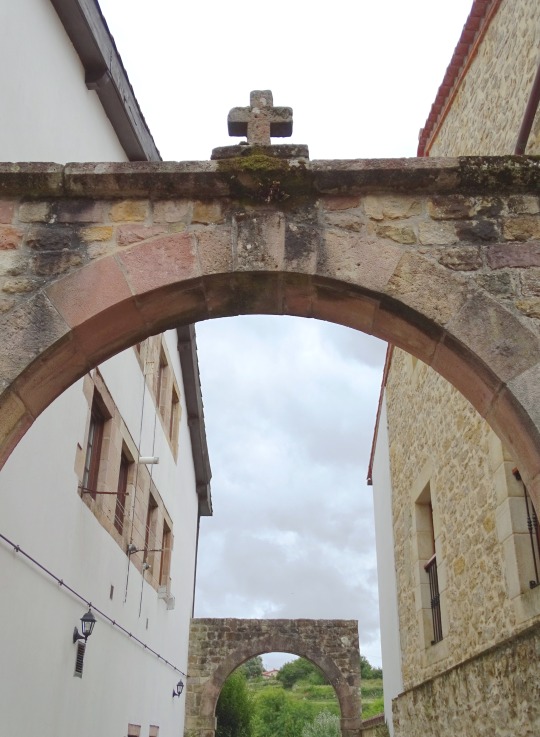

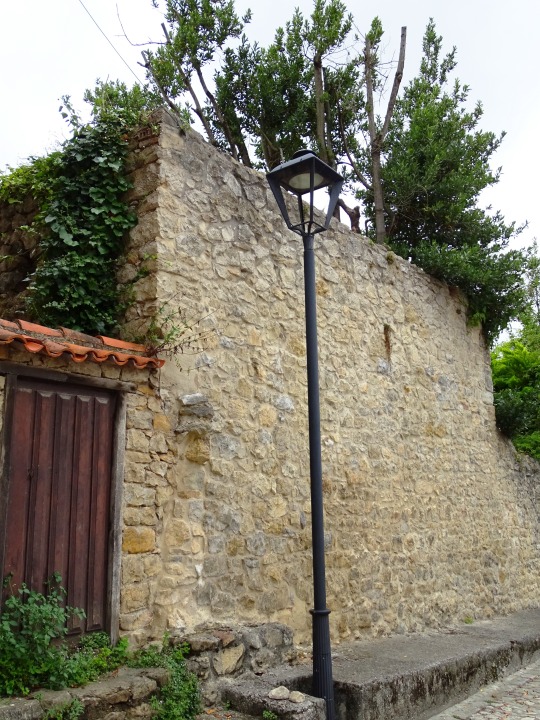
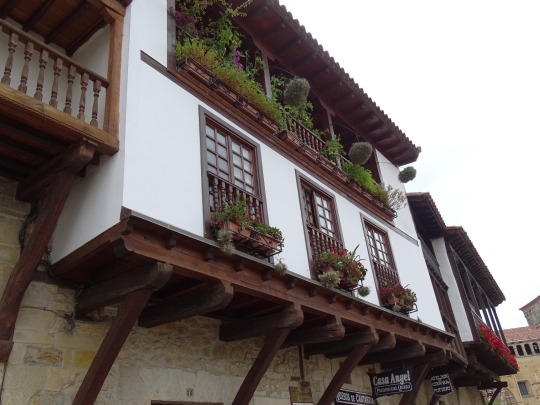
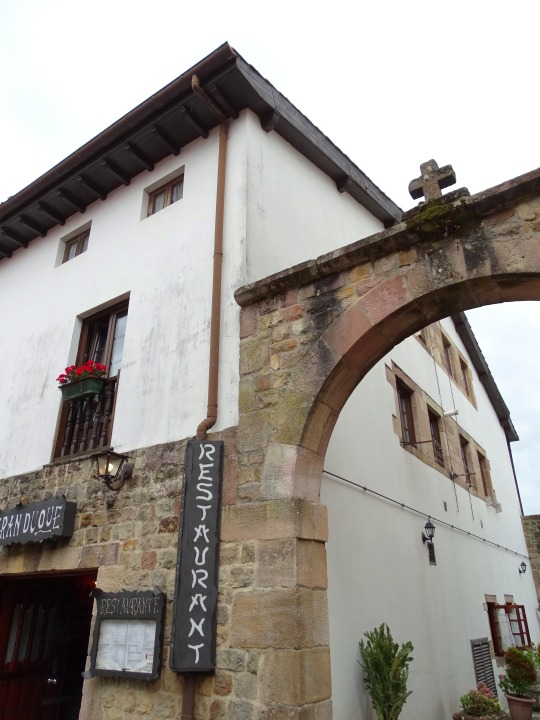


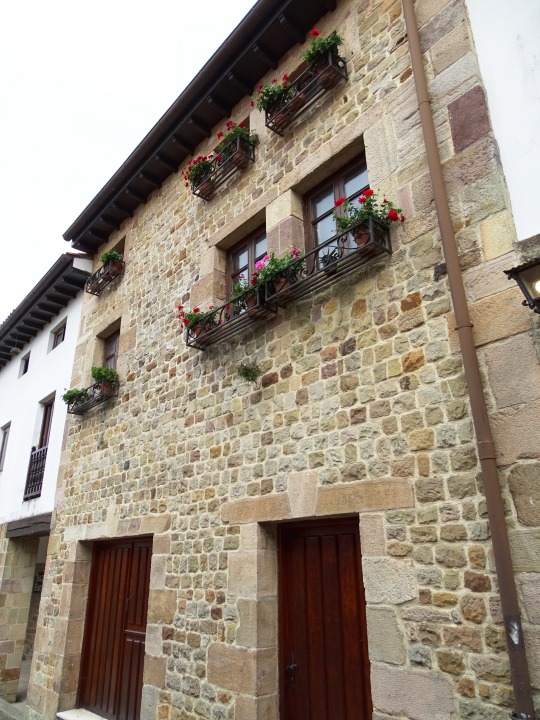

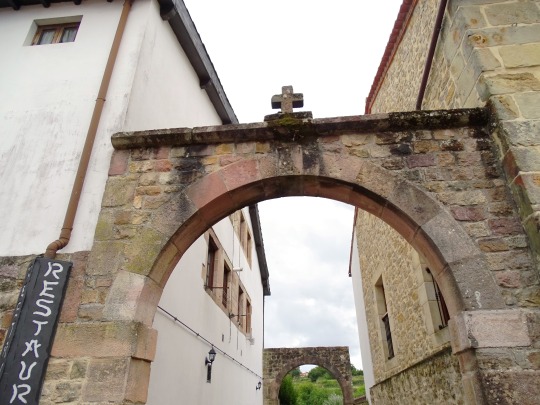
Santillana del Mar, Spain (No. 6)
During the Modern Age, the Asturias de Santillana became part of the jurisdiction of the Corregimiento de las Cuatro Villas , an area then led by Laredo . In 1509 the abbot recognized the III Marquis of Santillana, but only after violent military confrontations, in an attempt to recover religious power over the town. The urban and economic development of the town stagnates during the 16th century when Santillana did not participate in the Lawsuit of the Nine Valleys, important in the history of the institutions that gave rise to Cantabria. As a result, Santillana was administratively marginalized; however, it reappeared in the 17th century thanks to the wealth linked to its participation in the Spanish expansion in Europe and America.
At the end of the 16th century and during the 17th century , most of the houses that are preserved today in Santillana del Mar were built, configuring its nucleus as it exists today. Almost all of them follow the same typology, with two floors, a front open space and a larger rear space originally dedicated to corral, sunrooms or wrought iron or wooden balconies, and noble coats of arms, abundant in the town. Santillana is therefore essentially Baroque , although its
urbanization process remains unknown.
Outside the town were the building complexes of the religious orders built at that time. These were the convent of Regina Coeli of the Dominicans, that of San Ildefonso of the Dominicans, the Hospedería de Peregrinos y Pedestrians , the Hospital de la Misericordia and the Hospital de San Lázaro de Mortera. At the end of the 17th century , the collegiate church of Santa Juliana competed with that of the Holy Corps (in Santander) to obtain cathedral ownership.
Source: Wikipedia
#C. Jesús Otero#Town of Three Lies#Torrelavega#Santillana del Mar#Spain#architecture#Casco Histórico de Santillana del Mar#old town#cityscape#España#Northern Spain#Southern Europe#summer 2021#vacation#travel#tourist attraction#landmark#street scene#cobblestone#alley#Church of the Colegiata in Santillana#flora#flower#nature#Cantabria
7 notes
·
View notes
Text
Où Faire De La Plongée En Atlantique Nord : Les Spots Incontournables
Il n'y a pas que sur terre que les voyageurs peuvent trouver leur bonheur. Le monde sous-marin leur réserve aussi des surprises à chaque coup de palme. L'océan Atlantique Nord constitue une véritable aire de jeux pour qui veut découvrir l'océan d'un autre point de vue. Les activités ne se résument pas uniquement au farniente sur la plage ou à la croisière en bateau. Sous l'eau, de petits trésors cachés d'une incroyable diversité n'attendent qu'à être explorés. Tour d'horizon non exhaustif des plus beaux sites de plongée de l'Atlantique Nord.
Plongée sur la côte Atlantique de Cuba, sur les Jardines del Rey
Si vous rêvez d'explorer les richesses sous-marines de l'océan Atlantique Nord, Cuba peut être une destination idéale pour vous. Cette île possède d'innombrables atouts touristiques pouvant satisfaire toutes les envies, comme vous pouvez le voir ici. Si vous aimez la randonnée sous l'eau, les Jardines del Rey constituent un terrain de jeux par excellence pour assouvir votre passion. C'est un archipel composé d'un regroupement de petites îles situées au large de la côte Atlantique de Cuba.
Parmi les spots de plongée les plus prisés à Cuba, on peut citer celui de Cayo Coco. Cette magnifique plage de sable fin est connue pour ses récifs coralliens faisant partie des plus beaux de l'Atlantique. Elle abrite une richesse faunistique d'une incroyable diversité. La Playa Santa Lucia mérite aussi le coup d’œil. C'est ici que vous pouvez trouver l'une des plus longues barrières de corail au monde. Cette belle plage de sable blanc abrite une vie marine exceptionnelle. Vous pouvez y découvrir des requins-bouledogues, des poissons multicolores, mais aussi des épaves, comme l'épave du Mortera, la Bahia de Nuevitas…
Les Jardines del Rey possèdent de nombreux autres spots de plongée à découvrir, comme celui de Cayo Santa Maria, de Cayo Guillermo, de Cayo Romano, de Cayo Sabinal, de Cayo Cruz, etc. La plupart de ces spots sont reliés entre eux.
Plongée à Tenerife, dans les Canaries : l'un des meilleurs spots de l'Atlantique Nord
L'archipel des Canaries, et particulièrement l'île de Tenerife, constitue une destination de choix pour les plongeurs qui rêvent d'explorer les trésors sous-marins de l'Atlantique. Cette île jouit de conditions climatiques appréciables avec une eau à 20° en moyenne toute l'année, parfaite pour faire de la plongée en Atlantique Nord. Y plonger vous fera découvrir une vie sous-marine riche et variée. Amateurs en quête de nouvelles sensations ou plongeurs expérimentés, l'île de Tenerife abrite un nombre impressionnant de spots de plongée.
Parmi les spots de plongée les plus courus dans les Canaries, on peut citer celui de PalmMar. Ce site est recommandé aux plongeurs débutants. La plongée ne se fait qu'à une profondeur de 8 mètres. Lors de la séance de plongée à PalmMar, vous pourrez apercevoir une beauté remarquable de faune et de flore sous-marines, dont les tortues canariennes. Les plus aventuriers seront invités à visiter la petite grotte à 13 mètres de profondeur.
Si vous voulez vivre une expérience mémorable, ne manquez pas d'explorer le site de Tabaiba. Ce spot de plongée est indiqué aux plongeurs avancés. Celui-ci est connu pour abriter une épave d'un bateau de pêcheurs sur 3 étages enfouie à 33 mètres de profondeurs. Il est tout à fait possible d'explorer l'intérieur du bateau. Si vous avez encore du temps, n'hésitez pas à explorer l'épave du Condesito, les tombants et les pinacles sous-marins du site de Chuchos, les grottes de Cueva de Palm Mar
0 notes
Text
DES302 Blog#1 Reflection
12nd September (Tue)
Now that the grades for my Blog #1 submission for Design 302 are in, I'll do some self-reflection.
Firstly, the overall comments were about tagging and navigation, and I was judged to need more creativity. However, after discussing this with Nick, we decided that more advanced tagging and navigation were unlikely to be possible due to the technical limitations of Tumblr. Therefore, I was able to get extra points from them.

-> New comments from Nick, Thank you :D
So, I looked for ways to improve on the 'Creativity' section, where I lost points.

-> Lost point from Creativity criteria
Firstly, I had the opportunity to read and analyse the blog of Wayne, a student on the same course who had an interesting blog in which he was critical and pessimistic of himself and questioned himself. I found it most interesting how he reflected on himself by quoting his partner or various people's comments and reflections.

-> Wayne's Blog (1)
The second blog I analysed was my partner Erika's blog, which is also a blog where she asks herself questions and comes up with her own answers. What I found most interesting about her blog was the overall design and the colour of the fonts. She chose to use yellow for the title font to set it apart from other body writing and make it more accessible.

-> Erika's Blog (2)
Finally, I analysed the blog posts of Brit, a designer who writes a blog called Brit dot Design(2023). One of her most interesting posts, 'Nouveau finds for autumn', felt like she was speaking to her audience on a friendly level - it felt like a natural tea-time conversation, and I felt like I am there with her.

-> Brit's Blog (3)
By analysing the blogs of three designers, I set the creative direction for my own blog.
Firstly, I will ask myself questions and have a conversation with my audience. My blog is more report-like than other bloggers, so I want to make the process of asking myself questions and answering them conversational with my readers.
Second is the emotional and entertainment factor. Similar to the first point, to develop the boring part of my blog like a report, I will talk about my momentary feelings and include stories or personal stories that I found interesting while working on the project so that I don't get bored when reading long posts.
And last, use different colours. Currently, the writing on my blog is all black, but I would like to use the colours of my project theme to make my blog more enjoyable for my readers.
This reflection and development of my blog will make my posts more enjoyable for myself and my readers.
Reference
(1) Wayne Poon. (2023). Week 6: Pen at Work. Akvan's Workshop. https://sites.google.com/view/waynepoon/projects/uoa_work/year_3/des_302_blog?authuser=0#h.hmk2hfmmb735
(2) Erika Mortera. (2023). Reflection on Myself and my Project. EM Design. https://emor928-design.tumblr.com/post/726762037511962624/180823-week-5
(3) Brit Arnesen. (2022). NOUVEAU FINDS FOR FALL. Brit dot Design. https://www.britdotdesign.com/post/nouveau-finds-for-fall
0 notes
Text
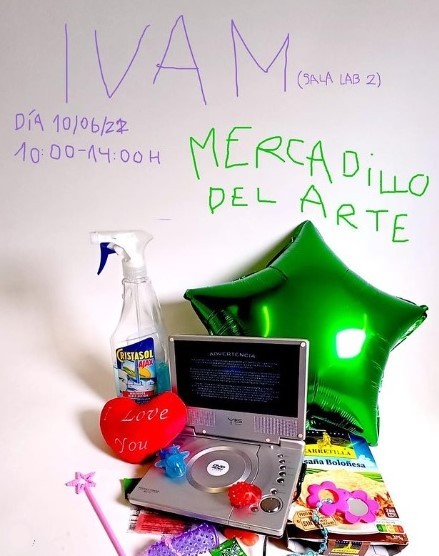
Mercadillo del arte. Trae tus cosas, no tus €€€ es una actividad organizada por el alumnado de Bellas Artes de la asignatura Estética y Política: nuevas formas de intervención ciudadana, que pretende cuestionar el mercado del arte. A través de una acción relacional, las alumnas invitan al público a participar en un trueque de objetos, afectos y experiencias tanto con ellas como con el resto de lxs espectadorxs. Es por tanto necesario traer objeto(s) de intercambio, pueden ser materiales o no.
Una propuesta de: Sara Alastuey · Paula Balsas · Jason Cornett Galdón · Noemi Costoyas · Alex Escribá · Alicia Ezpeleta · Diego Fabra · Laia Fernández-Pacheco · Nicolás Gay · Alice Giglio · Roser Lanuza Vicent · Claudia M. Camara · Laura Martínez Gómez · Carmen Mateo · Pascual José Medina · Amparo Molins Pascual · Ana Mortera · Maria Moscardó · Lorena Navarro Sanchis · Rut Ramos · Irene Remón · Ana Ribelles · Laura Sabater · Helena Sánchez Douis · Verónica Sánchez-Ferragut · Meritxell Simó · Lorena Tierraseca · Paula Vilar · Carmen Vives · Carlos Zárate
Dirigido por Elena Sanmartín (encargada de la línea de educación y mediación del Programa Arte y Contexto), Elena Rocamora Sotos (doctoranda en Arte y Estética en la UPV y la UG) y Miguel Corella Lacasa (profesor titular de Estética, Cultura Visual y Teoría del Arte en la UPV).
0 notes
Text
Day 54 - to Pola de Somiedo
Midway through the night the cold conditions gave way to strong winds.
Needing to get up in the night for a number one is one of the pleasures of life in the van. At home it seems so much of a bind. Here, I step outside the van and usually the night sky is a feast for the eyes, even when well below zero. I had braced myself for those temperatures but received the wind instead, and a fair few degrees above.

The wind was so strong it actually changed my plans today. I had decided to head up to Alto La Farapona, where the road ends at 1700 metres and hike to the three lakes just below, and stay over. I have postponed that until tomorrow.



Instead, I went to the village of Saliencia, at 1100 metres, and hiked up the the pastures above, at about 1500 metres. These pastures are known for their Mortera, or traditional shepherd’s huts. There are quite a few of them here, some of them, less than half, are still in use, though not yet. The cattle will be brought up in a few weeks. They are easily identified, as their roofs are made of dry branches, more simple than thatching. Many of these date back several hundred years.


A view of Saliencia village below.

The view of the Somiedo mountains from up here is the best around, and another reason to scale the steep 400 metres from the village.

Back at the van the wind was still howling, if anything stronger than earlier. With a weakened 4G signal, and it being a rugby Friday I retreated to the town of Pola, back 15 kilometres. In the early evening Roja and I headed into town for a couple of beers. There was less wind here, but it’s going to take a few days for the temperature to warm up again.


0 notes
Text
Teotico v. Del Val
G.R. L-18753, March 26, 1965
FACTS:
Maria Mortera died on July 1955 leaving properties worth P600,000. She executed a will written in Spanish, affixed her signature and acknowledged before Notary Public by her and the witnesses. Among the legacies made in the will was the P20,000 for Rene Teotico who was married to the testatrix‟s niece, Josefina Mortera. The usufruct of Maria‟s interest in the Calvo Building were left to the said spouses and the ownership thereof was left in equal parts to her grandchildren, the legitimate children of said spouses. Josefina was likewise instituted, as sole and universal heir to all the remainder of her properties not otherwise disposed by will. Vicente Teotico filed a petition for the probate of the will but was opposed by Ana del Val Chan, claiming that she was an adopted child of Francisca (deceased sister of Maria) and an acknowledged natural child of Jose (deceased brother of Maria), that said will was not executed as required by law and that Maria as physically and mentally incapable to execute the will at the time of its execution and was executed under duress, threat, or influence of fear.
ISSUE:
Whether or not defendant has right to intervene in this proceeding.
RULING:
No. It is a well-settled rule that in order that a person may be allowed to intervene in a probate proceeding is that he must have an interest in the estate, will or in the property to be affected by either as executor or as a claimant of the estate and be benefited by such as an heir or one who has a claim against it as creditor. Under the terms of the will, defendant has no right to intervene because she has no such interest in the estate either as heir, executor or administrator because it did not appear therein any provision designating her as heir/ legatee in any portion of the estate. She could have acquired such right if she was a legal heir of the deceased but she is not under the CIVIL CODE. Even if her allegations were true, the law does not give her any right to succeed the estate of the deceased sister of both Jose and Francisca because being an illegitimate child she is prohibited by law from succeeding to the legitimate relatives of her natural father and that relationship established by adoption is limited solely to the adopter and adopted and does not extend to the relatives of the adopting parents except only as expressly provided by law. As a consequence, she is an heir of the adopter but not of the relatives of the adopter. Hence, defendant has no right to intervene either as testamentary or as legal heir in the probate proceeding.
0 notes
Photo

Hola☺️ Aquí les presento un planazo 10/10 La Picota, montaña bicéfala de 240 msnm, es la mayor cumbre de la sierra de Liencres, cordal costero situado en el municipio de Pielagos, Cantabria, España. La cima de La Picota está situada en la localidad de Boo de Piélagos, abarcando sus faldas también las localidades de Mortera y Liencres, todas ellas en el municipio cántabro de Piélagos. Posee una prominencia de 186 m y una relevancia del 13,10%. Desde ella se dominan la ría de Mogro, estuario del río Pas, y el parque natural de las dunas de Liencres. *** El recorrido es cuesta arriba, pero llegar a la cima vale totalmente la pena *** Si llegan a visitar Cantabria esté es uno de los lugares más top que ver ⛰️🏞️🍃 Próximamente subiré un reels dónde les muestro todo el recorrido por La Picota☺️ Credicts @michelle_in_europe #cantabria #liencres #pielagos #dunas #mortera #sierra #españa #lapicota #spain #viajesporelmundo #travelphotography #travelblogger #travelspain #michelle_in_europe #turismoespaña #photography #blogger #explorar #explore #europa #europe (en Monte La Picota En Liencres) https://www.instagram.com/michelle_in_europe/p/CZFOb9ZLR4M/?utm_medium=tumblr
#cantabria#liencres#pielagos#dunas#mortera#sierra#españa#lapicota#spain#viajesporelmundo#travelphotography#travelblogger#travelspain#michelle_in_europe#turismoespaña#photography#blogger#explorar#explore#europa#europe
1 note
·
View note
Photo

Archdiocesan Shrine of St. Joseph the Patriarch
Location: San Jose, Batangas City, Philippines
Brief History:
Fr. Jose Victoria built the church in 1762. The Augustinian Chapter of May 9, 1767 named Fr. Agustin Horbegozo as the town's parish priest. Fr. Tomas Cañón replaced the old structure with one made of lime and pebbles. In 1790 the archbishop of Manila ordered the parish church of Batangas to give one of its old, dimanteled retablos to San Jose. Fr. Manuel Blanco in 1812 replace the original buildings with new ones made of masonry, he constructed the convento and began the work on the present church, but left in 1816 without seeing it completed. The church roof went up in flames in 1847 and was changed to tile in 1849 by Fray Marcos Anton. A fire damaged both the church and convento in 1857.[2] While the church underwent repairs, a new convento had to be built. Fr. Ramon Sanchez took over the parish in 1856 and continued the restoration work on the church, with the completion of the convent and tower, he also added a baptistery to the church in 1868; that was fitted with a marble font in 1878. Fray Bruno Laredo (1870-1884) improved both church and convent, rebuilding the bamboo sacristy in stone, and commencing the work on the transept.During the term of Fr. Vicente Maril (1884-1887), the roof of the church was replaced by galvanized iron. Fr. Victoriano Perez (1890 to 1896) restored the L-shaped convent and completed works on the transept and dome.
The 1898 revolution expelled the Spanish friars from the Philippines, the last Spanish parish priest being Fray Manuel de Arostegui of the Order of Saint Augustine, bears the last entry on the Book of Baptism dated May 28, 1898. He was replaced by Fr. Vicente Jose Romero who became the parish priest of the town.
On April 1, 1899, the Filipino Secular priest Juan Gernonimo Luna, a native of the San Jose, was appointed parish priest.In 1900 American troops occupied the convento and converted it into a military hospital for some time.In 1911 there were no more Filipino priest available in San Jose, a Capuchin friar was called to administer the parish. From July 1911 to 1915, the Missionaries of the Sacred Heart stayed in San Jose, where they set up a small major seminary. The seminary was short-lived for the MSH left the diocese in 1915.In 1915 Bishop Giuseppe Petrelli invited the Oblates of St. Joseph, the first Oblates arrived in Manila by ship on August 25, 1915 and took the train to San Jose where they were welcomed with the prolonged ringing of bells. Since then, they have been in charge of the parish of San Jose. Fr. Jose Anfossi became the parish priest, with the responsibility also for Cuenca, until his death in August 1921. Fr. Eugenio Gherlone immediately began the reconstruction of the church. His successor Fr. Luis Mortera finished the reconstruction of the church, which was beautified by paintings of St. Joseph, Fr. Luis was also responsible for the setting up the communion rails and lowering the windows for better light and ventilation
photo by: Cristina Morales
information from wikipedia:https://en.wikipedia.org/wiki/Saint_Joseph_the_Patriarch_Church_(Batangas)#cite_note-Balik_San_Jose_2000-1
3 notes
·
View notes
Text
Buscando sentido
Quisiera comenzar hablando sobre uno de los libros que definitivamente ha cambiado mi perspectiva de vida y probablemente el culpable de este blog.
“El hombre en busca de sentido” el libro del Dr. Victor Frankl donde nos narra su experiencia en los campos de concentración durante la segunda guerra mundial.Duante los años que permaneció ahí, sintió en su propio ser lo que significaba una existencia desnuda ,absolutamente desprovista de todo.
Él que lo había perdido todo,a su familia, que padecio hambre, frio, y que tantas veces estuvo a punto de ser ejecutado, pudo reconocer que hasta todo,la vida es digna de ser vivida y que la libertad interior es indestuctible. En su condición de psiquiatra y prisionero, el Dr. Frankl reflexiona con palabras de esperanza sobre la capacidad humana de transcender las dificultades y descubrir una verdad profunda que nos orienta y da sentido a nuestras vidas.
Este libro es un gran legado y ejemplo para la humanidad, que a pesar de estar en las peores condiciones como prisionero y experimentar torturas, supo encontrar sentido a su vida a pesar del sufrimiento.
Es aquí donde entramos a una gran paradoja, vivimos en sociedad frentica, corriendo por todos lados, y nos detenemos a reflexionar un momento, estamos en una era de depresión, estrés, ansiedad y nos olvidamos del sentido de nuestras vidas, el para qué vivir, muchas personas no saben lo que quieran, van por esta vida sin rumbo sin una direccion y no encuentran un motivo a sus existencia.
Crear la vida que queremos esta en nuestras manos.
“Al ser humano se le puede arrabatar todo,salvo una cosa, la ultima delas libertades humanas, la elección de la ACTITUD personal ante un conjunto de circunstancias para decidir su propio camino” (FRANKL, 1946)
En otras palabras, si no esta en tus manos cambiar una situación que te causa dolor, siempre podras elegir la ACTITUD con la que la afrontes.
Mi pregunta es, ¿Sabes el sentido de tu vida? ¿Sabes lo que quieres y para que lo quieres?
Espero les sirva esta reflexión y gracias por sus comentarios
Mara Mortera
3 notes
·
View notes
Photo

Otra maravillosa experiencia que me dejó este 2019 fue pintar al lado de mi amigo @juaneduardo.ruiz Realizamos un mural Querétaro inspirado en cuentos otomíes. Comparto algunas fotos del mural que nos han compartido quienes lo han visitado; ustedes también pueden conocerlo en el centro cultural Gomez Morín, frente a la Alameda Central de Querétaro. También en el proceso conocí a Jazmín Ivonne Mortera Álvarez, Angeles Zamora e Iraís Obregón, hermosas mujeres quienes nos ayudaron a pintar en el muro. Gracias Otomi Uaq por invitarnos a pintar y a apoyarnos en el proceso. Gracias infinitas a tod@s por todo el apoyo, besos y abrazos 🤗😘🌸🌸🌸 #gomezmorin #queretaro #muralismomexicano #eduardoruiz #santiagosavi #artemexicano #otomi (en Centro Cultural "Manuel Gomez Morin") https://www.instagram.com/p/B6qxZvFjmrt/?igshid=1od3b5agjais
5 notes
·
View notes
Photo

12-23 Rodrigo Dourado (L) of Brazil's Internacional jumps for a header with Jose Mortera of Mexico's Tigres during their Libertadores Cup semifinal first leg football match at Beira Rio stadium ... http://dlvr.it/Q7Mflr
0 notes
Text
Memorials of the Saints - 17 August
Memorials of the Saints – 17 August
St Amor of Amorbach St Anastasius of Terni St Beatrice da Silva Meneses St Benedicta of Lorraine St Carloman St Cecilia of Lorraine St Clare of the Cross of Montefalco (c 1269-1308)
St Donatus of Ripacandida St Drithelm St Elias the Younger Bl Enric Canadell Quintana Bl Eugenio Sanz-Orozco Mortera St Pope Eusebius St Eusebius of…
View On WordPress
#saints17august#stclareofthecrossofmontefalco#sthyacinth#stjeannedelanoue#stjeanneofthecrossdelanoue
4 notes
·
View notes
Text
Detienen a par de hombre en posesión de armas
Detienen a par de hombre en posesión de armas
Tijuana, 7 de diciembre de 2022.- Dos hombres fueron detenidos en la colonia Buenos Aires Norte luego de que tras una revisión de rutina, se les encontró un total de 7 armas de fuego en su vehículo. Los hechos ocurrieron cuando en la calle Nuevo León y Xicoténcatl Leyva Mortera de la colonia Buenos Aires Norte, los oficiales le marcaron el alto al conductor de un pick up Chevrolet Silverado 2500…

View On WordPress
0 notes
Text
Amigos de Beto Escobar tiene doble jornada
*Este domingo en la Liga de Veteranos Sección 36. Fernando Mendoza. Reynosa, Tamaulipas.-Este domingo 23 de octubre el equipo Amigos de Beto Escobar, sostendrá una doble jornada en la Liga de Veteranos de softbol de la Sección 36, teniendo como escenario el campo Manuel Pavón Mortera ubicado en la colonia Antonio Bermúdez, esperándose un partido lleno de emociones. En la jornada pasada Amigos…

View On WordPress
0 notes
Photo

Los asturianos Secta debutan con “Nada nos va a parar”......... Como anticipo, lanzaban el single “Dame tu miel”, primer avance del álbum publicado recientemente en plataformas digitales. Grabado en riguroso directo en los estudios Casa Furia de Oviedo, y producido por Constan Mortera, el nuevo LP de los asturianos consta de 9 cortes que reflejan las señas de identidad de la banda; puro rock and roll, riffs directos con un sonido electrizante y unas letras ácidas, donde Nici ejerce de frontman con gran soltura y destreza; mostrando el aspecto más canalla del grupo. “Nada nos va a parar”, refleja el buen estado de forma de los asturianos, un álbum pensado para llevarlo al directo con absoluta solvencia, una batería de canciones con una imponente base rítmica que encajan perfectamente con estribillos proyectados para buscar la complicidad con el público. Las letras de las canciones gravitan en torno a la experiencia vital, temas auto-referenciales como el amor, el desamor, el desengaño y la música que veneran, todo englobado en el contexto del rock. El marco creativo de la banda se desenvuelve en el rock and roll de la década de los 70, y, como grupo fetiche y continua inspiración, los australianos AC/DC. Continúa en www.nosvemosenprimerafila.com #secta #rock #indie #emergentes #asturias #rocknroll #rnr (en SECTA) https://www.instagram.com/p/CgRJ8oAj9Yo/?igshid=NGJjMDIxMWI=
0 notes